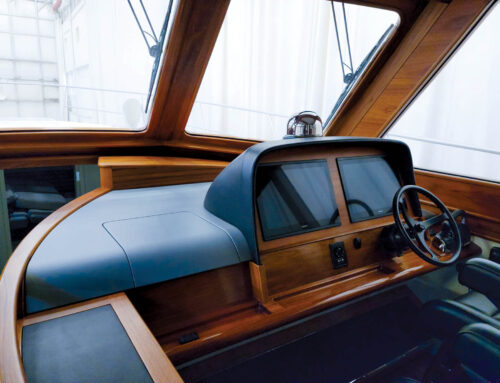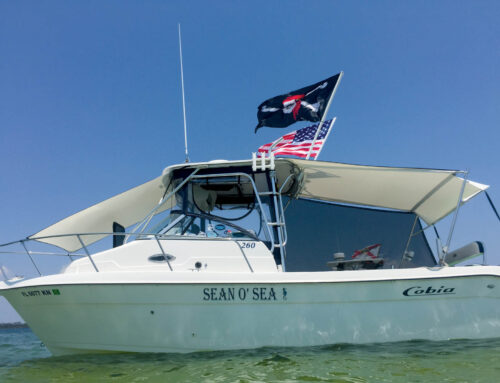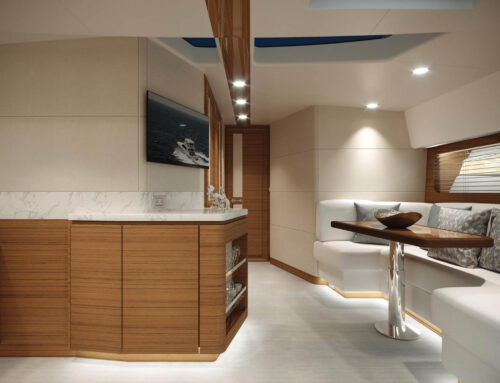Choosing seating materials and finishes
By Terri Madden
I moved to San Juan, Puerto Rico, in 1995 with a degree in textile design and experience in custom fabrication for residential spaces, leather bags and apparel. Fortunately, my brother-in-law had a fledgling canvas business specializing in exterior marine fabrication that desperately needed skilled employees. I was fascinated to learn about materials that had to withstand the elements of a harsh tropical environment. I loved paging through the Bainbridge and Astrup (now Trivantage®) catalogs. It was like learning a new language.
Soon after I started, the owner of a 52-foot Italian-built Riva requested airplane-style port and starboard salon seating, drapes for six portholes and fitted mattress covers for two bunk beds. The focal point from the bird’s-eye maple veneered salon was a dramatic master cabin quilted coverlet. The project also included new exterior tailored back-to-back dual helm seats in a combination of pleated and smooth vinyl for the hi-lo contours, along with protective covers. The project deadline was three weeks to have the materials and budget confirmed. Since the customer knew I was a novice, he insisted on approving the quantity of snaps I would be drilling into the fine woodwork to secure the new seating.
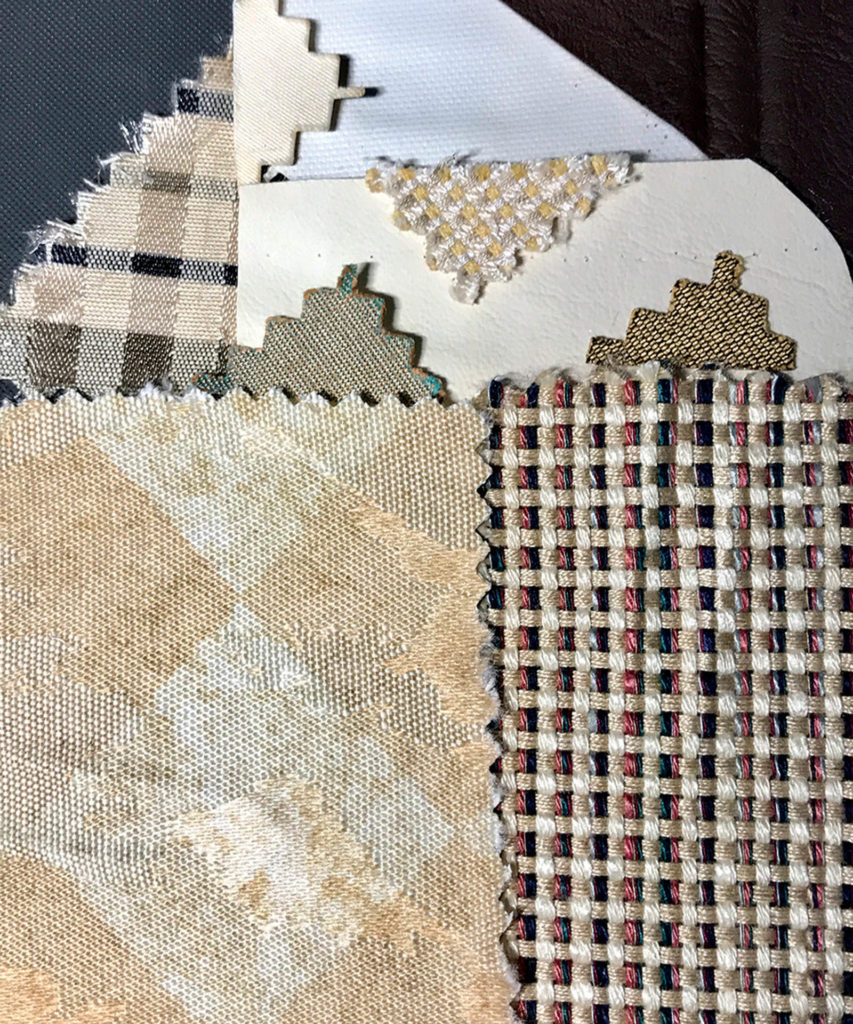
Challenges and resources
The challenges I faced were numerous: from selecting the best materials for the interior part of the project to confirming the hi-lo contours for the seating. Since I had no experience with constructing interior zipper pockets to provide the requested shape, I fabricated a front “off-center” seam that could be used as a tie-down to a back/bottom piece of PVC against the hi-lo foam. It was a rudimentary solution, but it created the desired effect. To this day, only one other project has required so much tenacity and skill.
At that time, I had never worked with vinyl and knew nothing about “expandable vinyl,” something essential for seating contours and resilience. Fortunately, a great sales rep led me in the right direction. It was then that I began to understand the expertise of these vendor representatives. In fact, when I went out on my own in 1997, it was a supplier rep who told me about the Marine Fabricators Association (MFA) and its annual conference, regional workshops and fabrication awards.
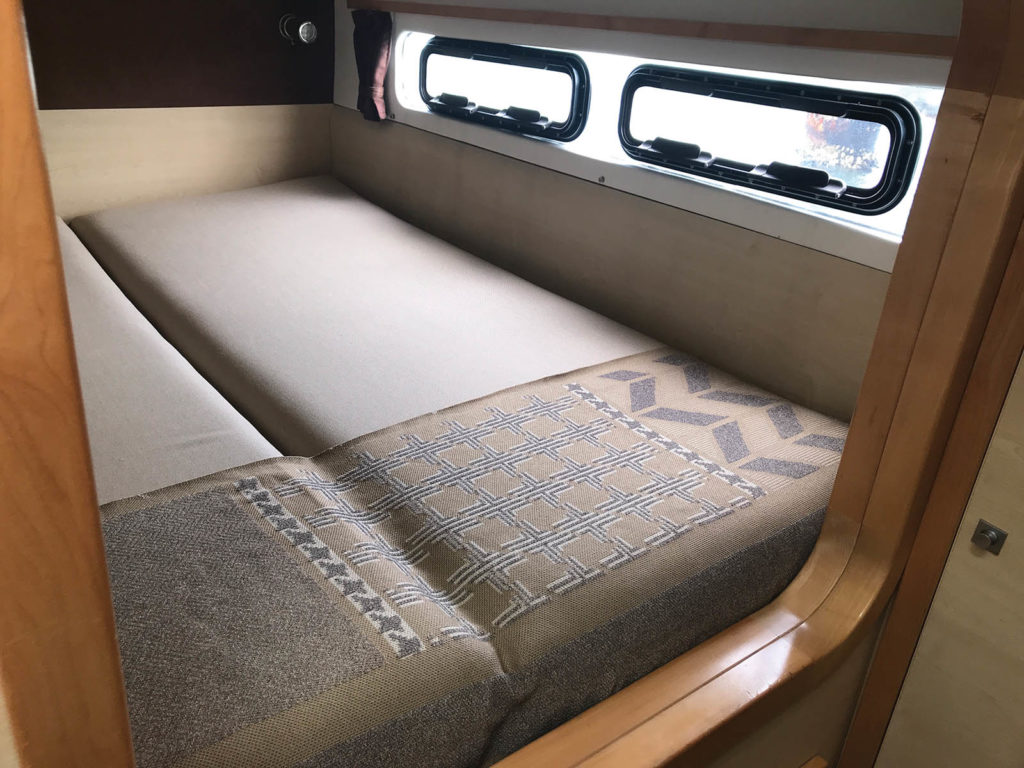
That year changed my life. It was my first experience networking with fellow fabricators, an important camaraderie of support and information sharing that continues to this day. I also value the Marine Canvas and Upholstery Discussion Centre Facebook group, which has worldwide members facing and resolving inordinate challenges. These resources, along with YouTube videos and years of experience, have provided a wealth of knowledge for my current projects and my occasional “never-before” challenges.
Choosing materials
When choosing the right materials, it’s important to do your research, listen to what your customer is asking for, and consider where the end product will be located, how it will be used and maintained, and your customer’s budget.
Saltwater versus freshwater will affect your professional offerings and choices. Will your projects be outside, inside or under cover? Both the elements and cleaning products take their toll on all materials.
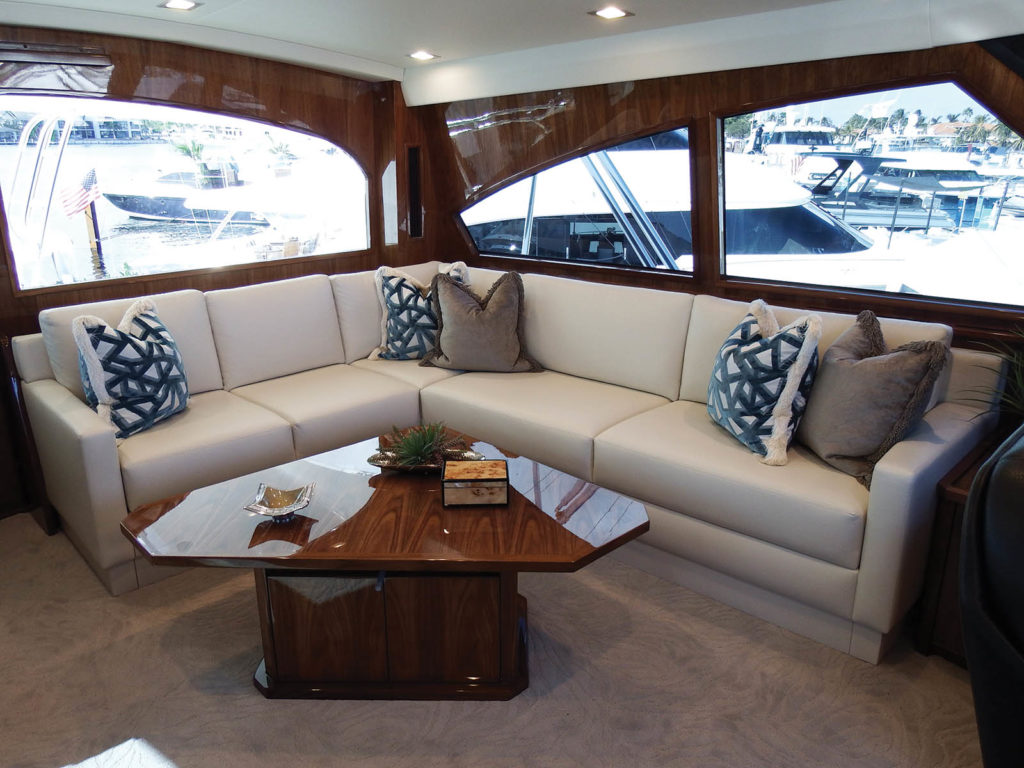
Coated vinyl is designed to be UV-, mold- and water-resistant, yet the layer of protection may not last as long as a laminated marine vinyl.
Laminated marine vinyl offers a sealed layer of protection similar to coated vinyl. It prohibits rips and tears and is more appropriate for covers. Acrylic and polyester are wise fabric choices for marine work, as are expandable vinyl materials that offer abrasion, mold and mildew resistance.
Vinyl specifically labeled “marine” will outlive other vinyls. Reputable commercial manufacturers source vinyl specified for use in outdoor settings, yet the deterioration we see in barely a year is astounding, even when the materials are under cover yet open to the elements of sun, wind and rain.
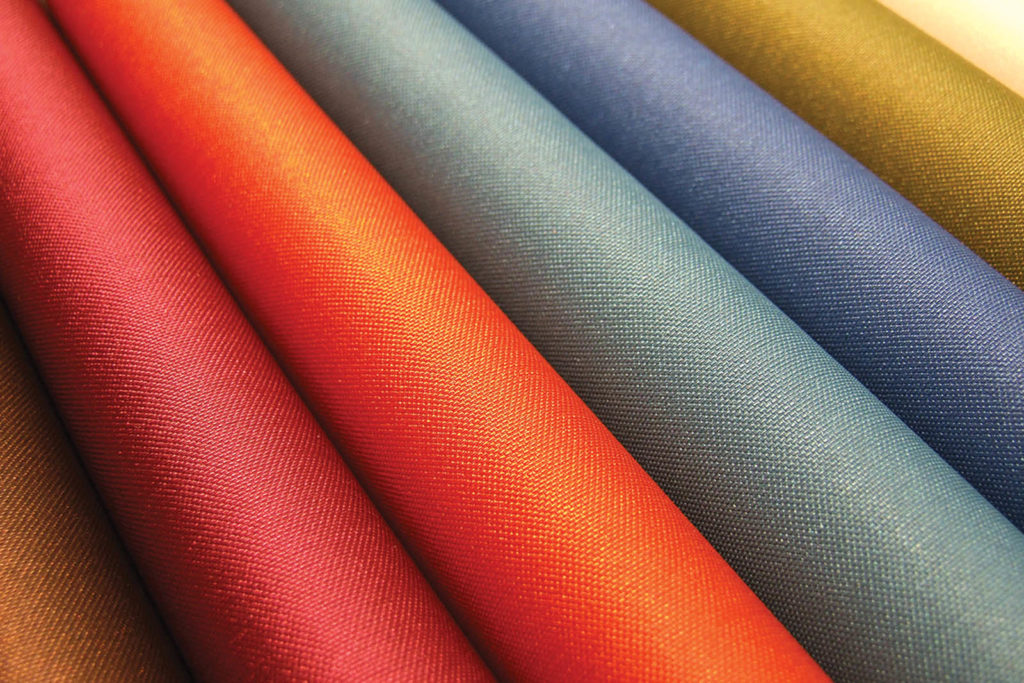
Research materials and finishes
Consumers are increasingly looking for environmentally safe materials. Being knowledgeable about materials and finishes will position you as a reliable source for high-performing materials that address these concerns.
Understanding proprietary terms like PERMABLOK3®, SILVERGUARD® and PERMAGUARD®, as well as phthalate, biocide and antimicrobial may initially seem daunting, yet thoroughly understanding them will help
you confidently recommend the right finishes and materials to your customers for their projects.
Discuss label terminology with suppliers using their online information, emails, phone calls and during MFA conferences and workshops. I spend a lot of time doing research on websites such as www.sergeferrari.com, www.herculite.com, www.spradlingvinyl.com, and www.sileather.com, among many others.
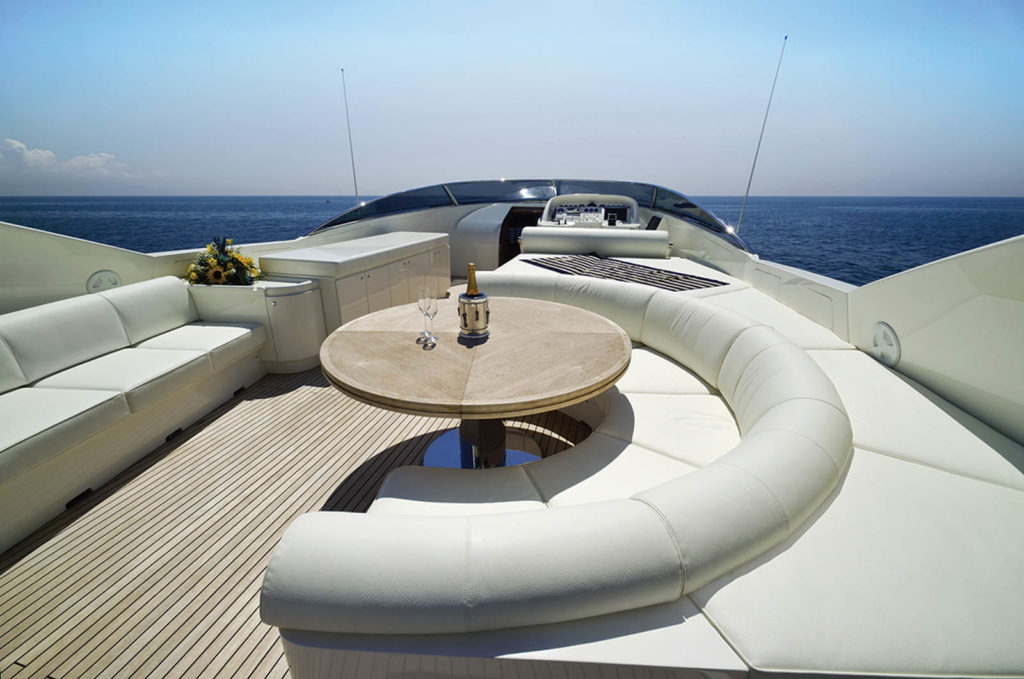
Refer to vendor sample cards. These include material data for standards that can exceed one million double rubs, mold and mildew resistance, and more. Look for protective finishes like PreFixx® that are engineered to allow upholstery to be cleaned again and again without showing signs of wear. These finishes can reduce maintenance costs and extend the upholstered product’s useful life, especially when sat on with wet swimwear and during the heat of summer.
Educate customers about caring for materials. Use sew-in care labels that are available from suppliers such as WeatherMAX® and Sunbrella®. (Editor’s Note: See “New Products” on page 13 for information about Sunbrella Horizon, the company’s first nonwoven marine seating fabric crafted to resist the notorious pinking effect.)
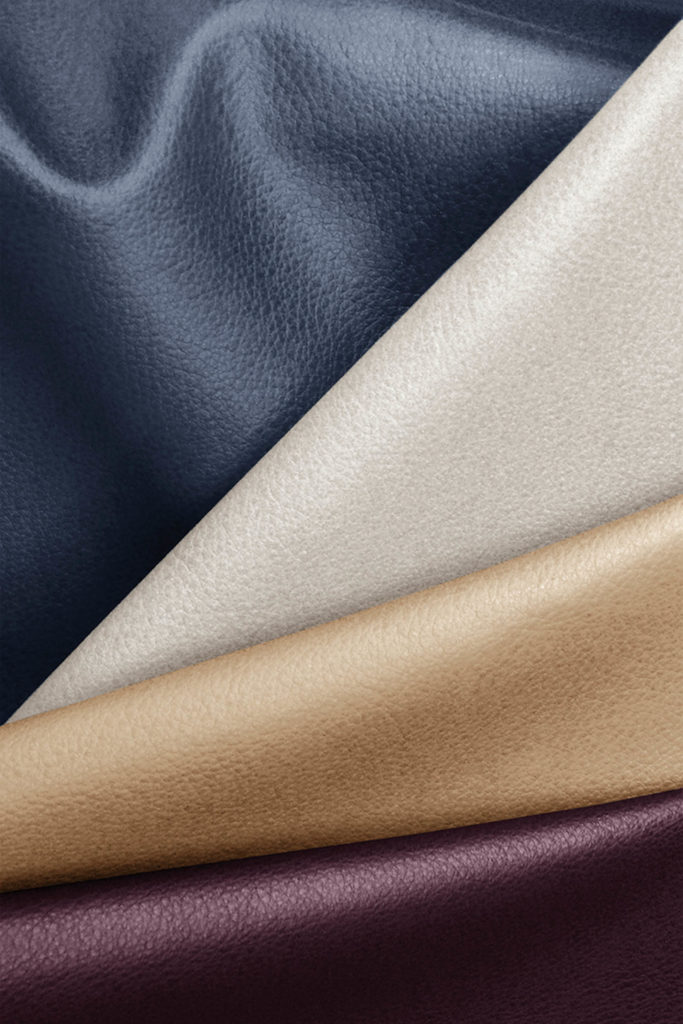
Provide vendor guidelines so customers know how to treat spills and stains in a timely manner. Light soil and stains can be removed with mild soap and water. For difficult stains, tell customers to identify the source, refer to the staining agent list, and follow the directions that correspond to their situation in a timely manner.
From beginner to seasoned veteran, I have continued to research and educate myself about finishes and materials in our industry. I hope you do too. It’s the key to being inspired and to exceeding your customers’ expectations with quality and timely service.
Terri Madden owns Sand Sea & Air Interiors Inc. in San Juan, Puerto Rico. www.sandseaair.com.
 TEXTILES.ORG
TEXTILES.ORG 


